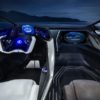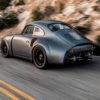Dodge and Plymouth of the sixties that beat the wind – and win NASCAR
Scarecrows, mockery of automotive design, ridiculous homemade products – such unflattering epithets the uninitiated viewer will reward the grotesque aerodynamic Dodge Charger Daytona and Plymouth Road Runner Superbird. Muscle cars turned into racing monsters really do not pull on beauty kings. They pursued completely different, no less lofty goals.
The sixties are perhaps the most beautiful period in the history of the American automotive industry, comparable to which only the previous decade of unbridled aerospace luxury could be compared. This is the time of uncompromising machines that harbored primitive power, did not know any ecological noose and pedestrian safety standards. It is generally accepted that it was in that era that engineers had a truly free hand.
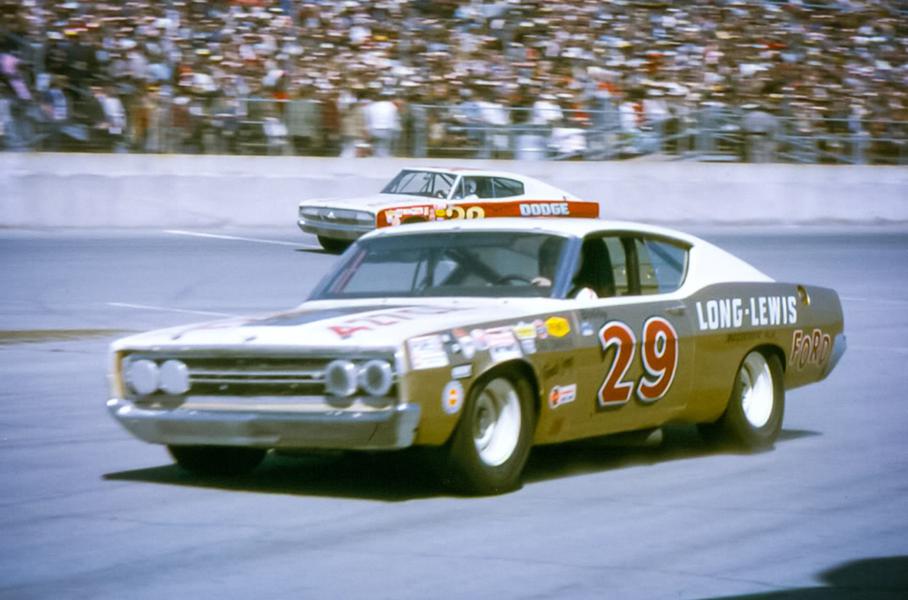
nascarhall.com
In those blessed times, the dialogue with the air currents was conducted in an appropriate way – they were not paved with difficult routes, but simply taken by the throat. Rough and straightforward, but extremely effective. Of course, this is a kind of allegory, and even if the esteemed reader does not have an opinion about American engineers as savages in animal skins, they used the available arsenal of tools and knowledge in this area to the fullest extent. Another thing is that outstanding results were not always achieved by graceful methods.

Chrysler Airflow Sedan
Chrysler has long been interested in aerodynamics. Back in the 30s of the last century, the company brought to the market the streamlined Airflow sedan, which became a brilliant failure – the audience decidedly did not understand the licked car, but other companies realized what was happening. The Dodge Charger Daytona and Plymouth Road Runner Superbird, some of the most aerodynamic cars of their era, were released quickly and spontaneously by Chrysler.
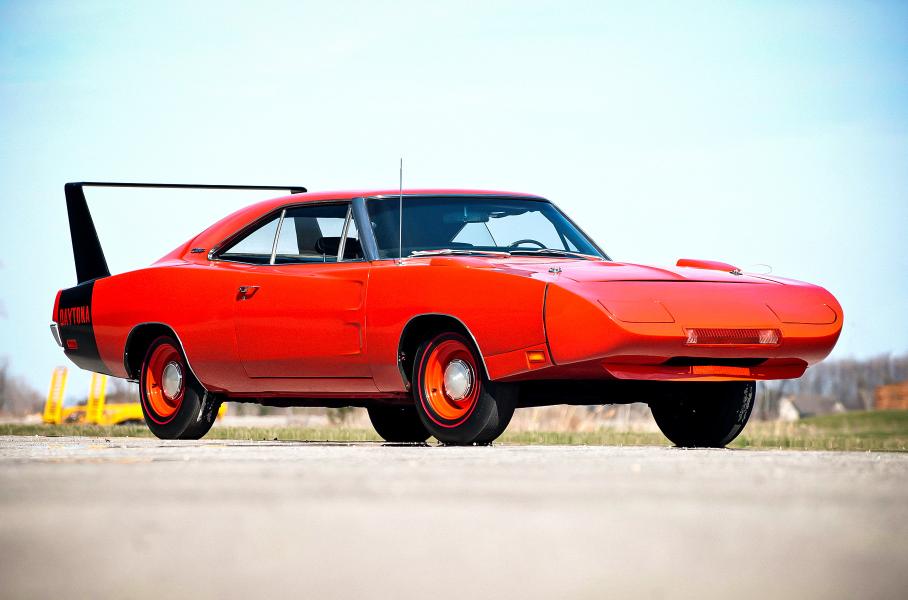
Dodge Charger Daytona
Their appearance evoked mixed feelings, as the focus was not on aesthetics, but on the goal of winning the NASCAR Grand National.
Ford competitors pushed Chrysler to create homologation modifications, known as winged warriors (“winged warriors”). In stock car races in the early 1960s, the main focus was on large, powerful V8 engines, with aerodynamics as a bonus. By the end of the decade, the focus shifted towards creating more streamlined special versions based on production vehicles. However, the original qualities of the factory equipment played a serious role. The SportsRoof fastback body, with its sloping roof starting to slope to the stern almost from the windshield, is believed to have contributed significantly to the victories of the mid-size Ford Torino.
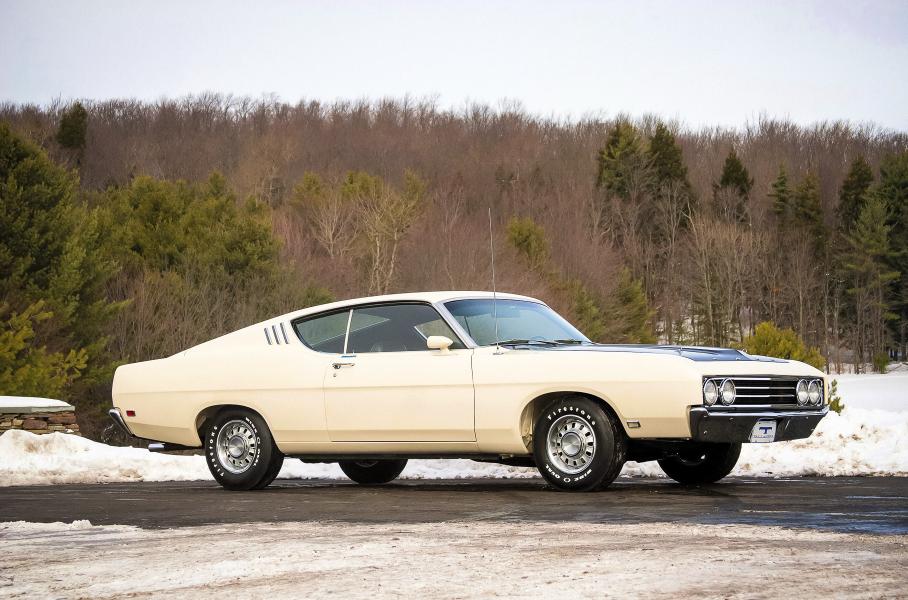
Ford Torino Talladega
On this topic
In 1968, the muscle car chalked up the lead in the NASCAR, USAC and ARCA (Automobile Racing Club of America) championships. The next step towards perfection was taken by the homologated Torino Talladega fastback with a redesigned front end, which appeared on the oval Grand National super speedways of the 1969 season. The radiator grille, along with the head optics, was not a fashionable recessed, but was located flush with the fenders and the slicked edge of the hood.

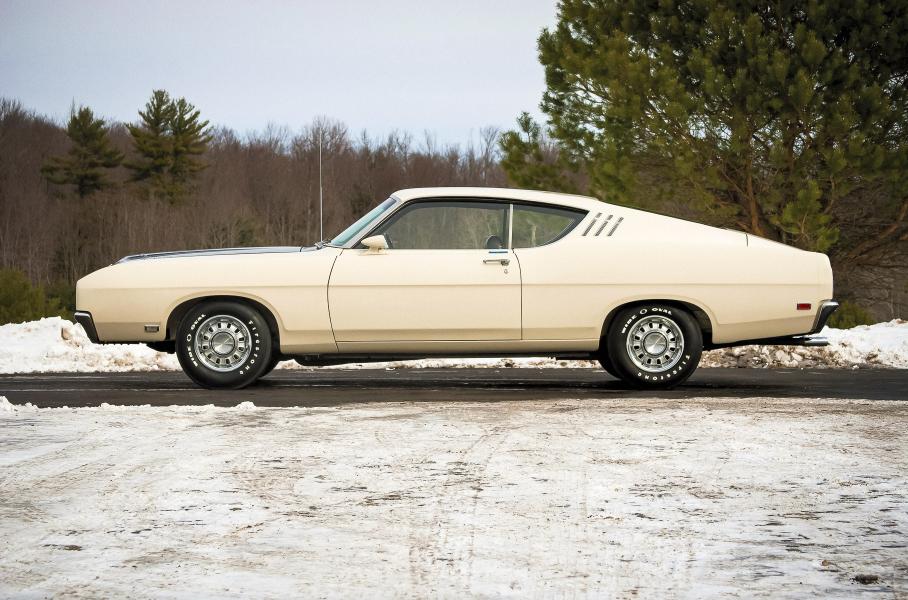
Ford Torino Talladega
Bob Roger, head of the Dodge racing division, caught the trends. He initiated the creation of a large-caliber ultimatum weapon to shoot the accelerating Ford along with its star pilots. According to the homologation requirements, the manufacturer was supposed to release 500 road vehicles, but their practicality and appearance, and, accordingly, the potential inconveniences arising from ordinary drivers during operation, did not bother the engineers. It was necessary to become champions – period.
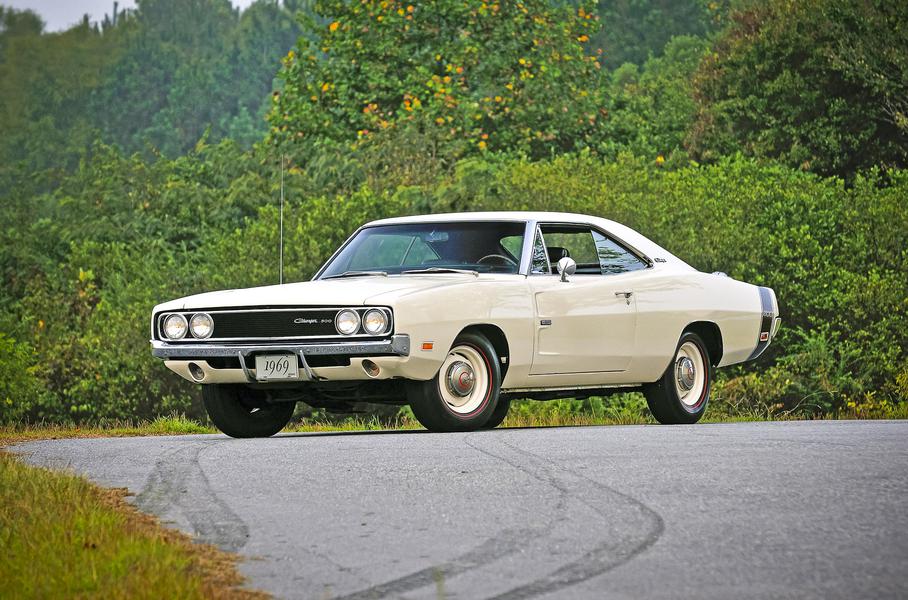
Dodge Charger 500 Hemi
During 1969, two completely different aerodynamic modifications of the Charger mid-size muscle car appeared. The early and less radical Charger 500 was concocted from the Torino Talladega recipe. The ominous “blind” front end was pushed forward, and the rear window, which on a standard “Charger” is recessed into the pillars, was allowed to flush with them for better streamlining. From February 1 to September 14, Dodge won 15 races, while the off-the-shelf Blue Oval won 7 more races.


The Charger 500 didn’t do the impossible, but it did play an important role in NASCAR’s image. “It is not only chased, but also sold, which helps to popularize stock car competitions. When you buy a racing car from a dealer, or at least the model that formed its basis, you become closer to stock car racing, ”wrote the American edition of Hot Rod about the unusual modification. The “500th” was inferior to Ford cars, but after the sensational Charger Daytona hit the tracks, the dominance of the “blue oval” pilots came to an end.

Dodge Charger Daytona
The weapon of victory turned out to be surprisingly ugly and, as it turned out later, shamelessly fast. There were legends about his ugliness. Even Dodge Division vice president and general manager Bob McCurry spoke out badly when engineers showed him the sketches. After asking them how quickly a car could be built and whether it would win the races, McCurry nevertheless threw after them: “If someone interferes with the project, let me know. I will clear the way for you. “
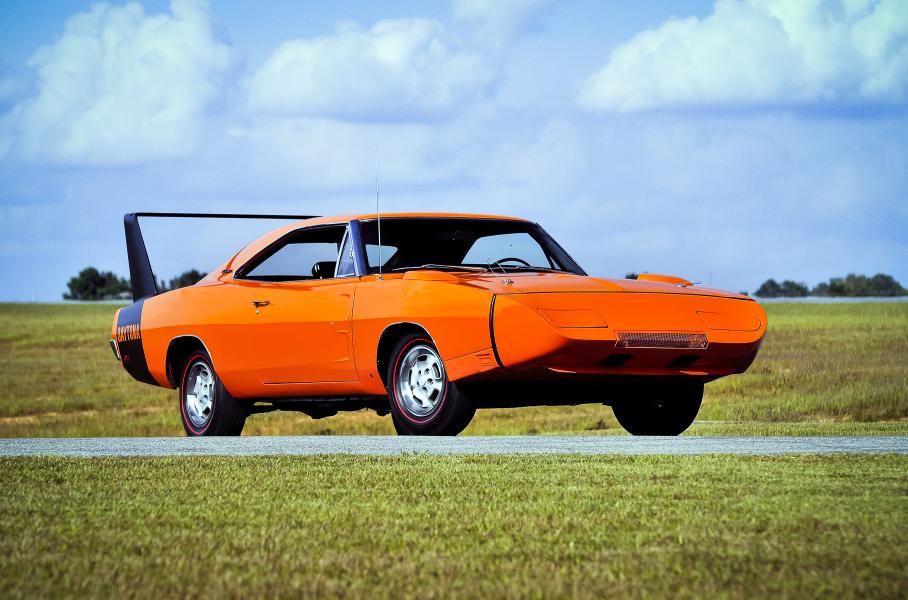
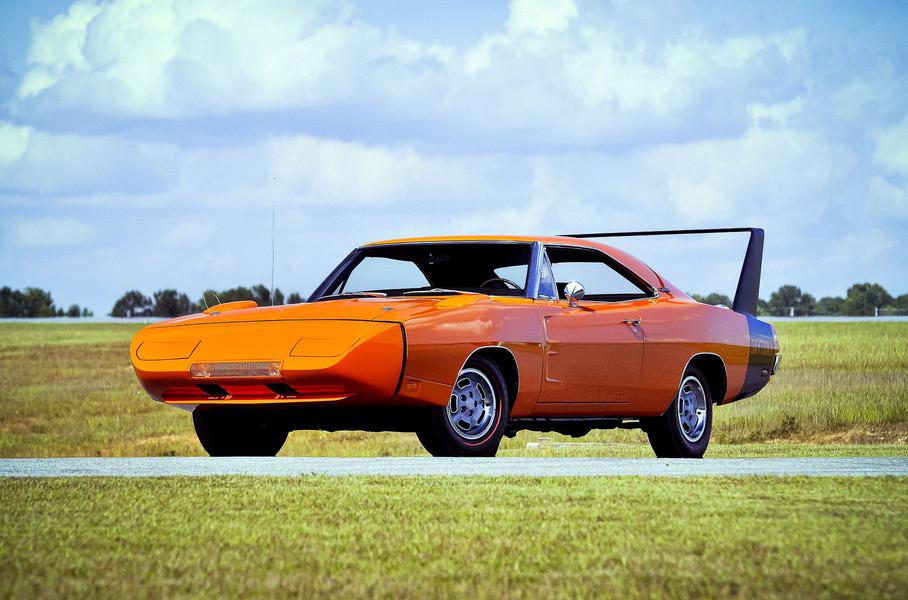
Dodge Charger Daytona
Three groups were involved in the development of Daytona. The first, which included Nascar pilots Buddy Baker and Charlie Glotzbach, worked with prototypes at the magnificent Chelsea Proving Grounds about 8 km long and profiled curves at an angle of up to 31 degrees like at the legendary Daytona circuit in Florida, after which the super version was named … The second team dealt directly with aerodynamics and the search for the best solutions, while the third set up production together with Creative Industries, which eventually carried out the final assembly of the cars.
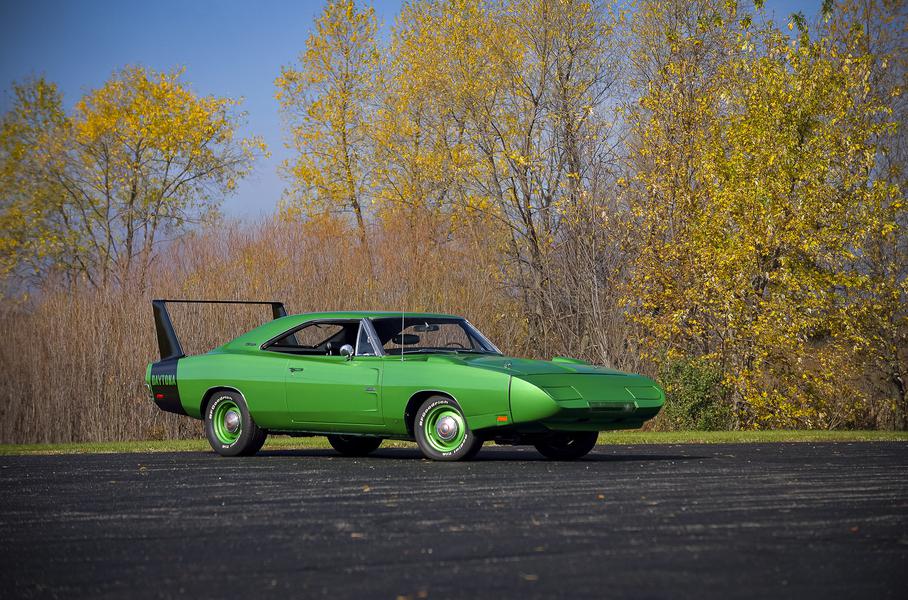
Dodge Charger Daytona Hemi
The creators of the “winged warrior” pursued the goal of increasing the speed on the racetrack in Daytona, Florida to about 312 km / h. It was possible to squeeze it out without new empennage, but with an additional 90 hp, extracted from the Hemi engine. The unit had the potential, but forcing it took time, which was pretty tight. In September, NASCAR big boss Bill France planned to host the first race on the new super speedway Alabama International Motor Speedway (Talladega Superspeedway since 1989). Dodge wanted to bring its wonderful car there, but for homologation the new product had to be presented on April 15th.
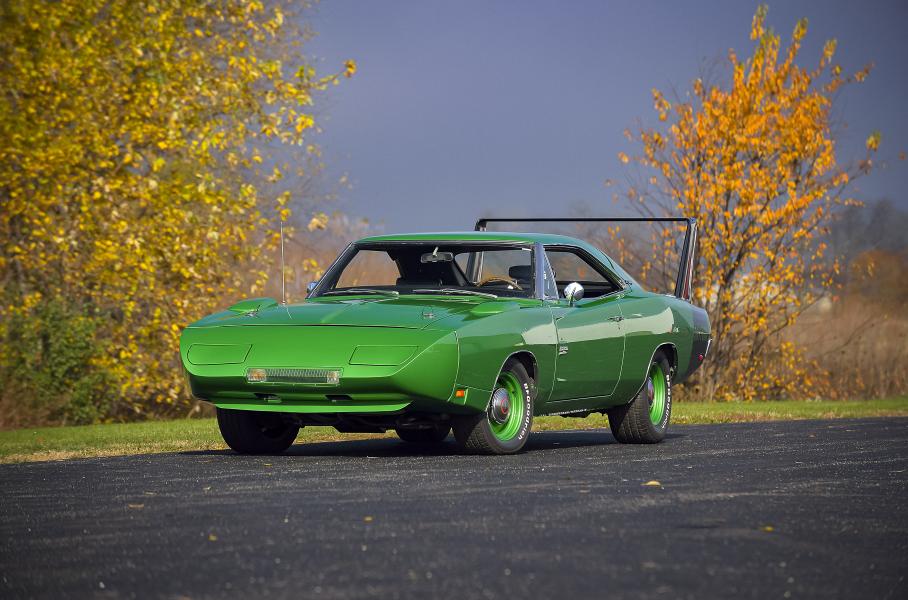
Dodge Charger Daytona Hemi
The tall wing, which gives the Charger Daytona a toy-like look, didn’t come from a good life. The original 12-inch (305 mm) aerodynamic element blocked access to the trunk, and during the research it turned out that loading the belongings (remember, the homologation required the release of a batch of road cars!) Will only work with a 23-inch rear shelf. In terms of the values we are used to, this is 584 mm! Despite its repulsive appearance, the wing worked great – providing downforce and first-class directional stability.
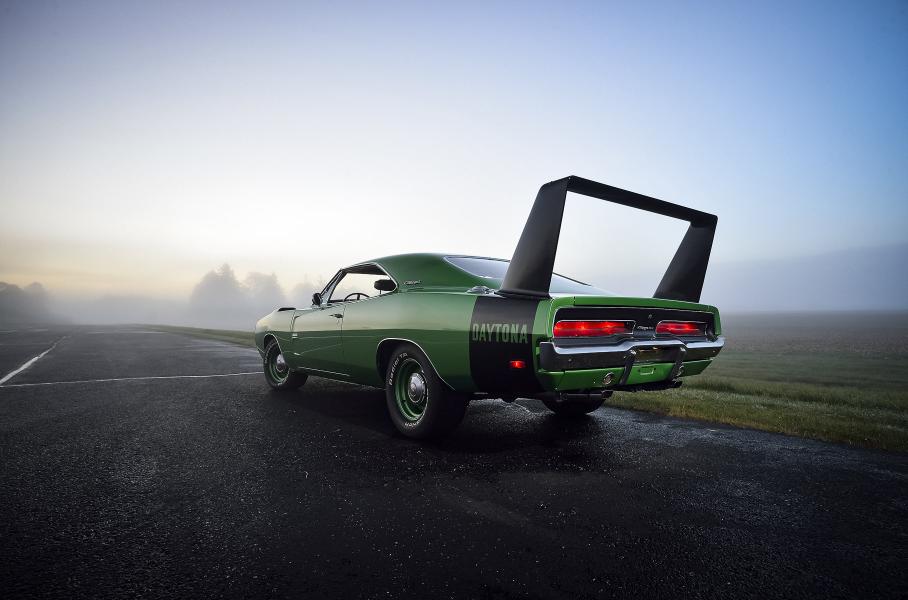
Dodge Charger Daytona Hemi
A test mule with a fiberglass wedge-shaped fairing on the front end was shown to the discouraged press on April 13. The hype around the car has risen – bless you! No one has seen anything like it before, and it is unlikely that the exterior evoked unanimous delight in everyone.
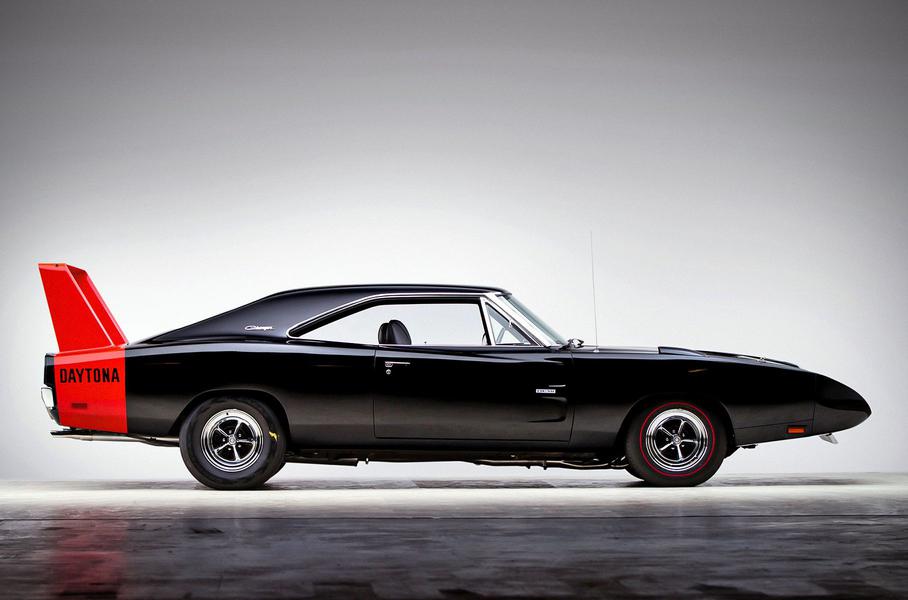
Dodge Charger Daytona Hemi
The tests started in July and the results were amazing. Daytona, driven by Buddy Baker, reached 235 mph (378 km / h), while Charlie Glotzbach accelerated the “winged warrior” to 243 mph (391 km / h). Physically, the machine could not be super-fast. Aerodynamic tweaks, including an 18-inch beak (457 mm), reduced the drag coefficient to a phenomenal 0.28. For comparison, the hot Italian beauty Ferrari 360 Modena has a drag coefficient of 0.34, while the Koenigsegg Agera R has a coefficient of 0.33-0.37. Of course, this indicator is not the only decisive factor for the complex aerodynamics of the car, but we are talking about a large muscle car, the downforce of which was provided by a huge “bench”.

Dodge Charger Daytona Hemi
Shortly before September 1, a batch of 503 road cars was ready – 433 copies received a 440 cubic inches (7.2 L) Magnum V8 engine developing 375 hp, and only 70 came out with a mighty 425 hp 426 Hemi volume 7. 0 l with hemispherical combustion chambers (22 of them received with a manual transmission and 48 – “automatic”), which were equipped with racing cars.
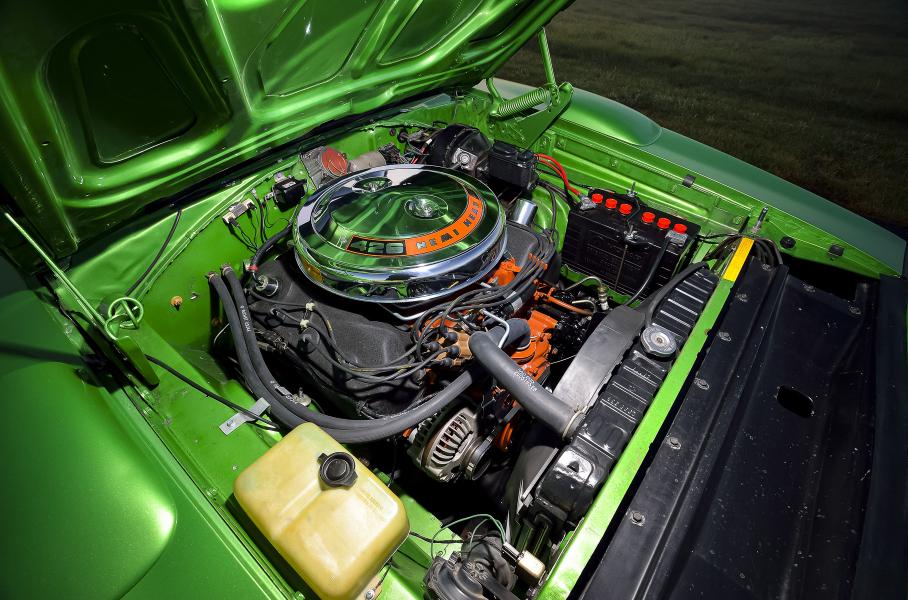
In those few moments, when the gas pedal was not sunk into the floor, and the rear tires did not try to burn through the asphalt, the owner of the Daytona had to put up with more than 5.5-meter muscle car length, suffering in parking lots and a tendency to overheat at low speeds … All these problems did not bother the Sheriff’s Indians – the car began to smash rivals on oval tracks, and the winners, as you know, are not judged. Young driver Richard Brickhouse flew to victory in the debut Talladega 500 at 320 km / h, reaching an average speed of 153.778 mph (248 km / h). And that was just the beginning.

Plymouth Road Runner Superbird
The now defunct Plymouth brand, which was part of the Chrysler empire, was simultaneously preparing its “warrior”. Richard Petty, one of the highest scoring drivers in NASCAR history with a total of seven league titles and winning the 1964 and 1967 seasons, left for Ford, but promised to return to the Plymouth when doing it. conditions. King Richard was passionate about a competitive car with advanced aerodynamics, and the company satisfied his demand with the Road Runner Superbird.
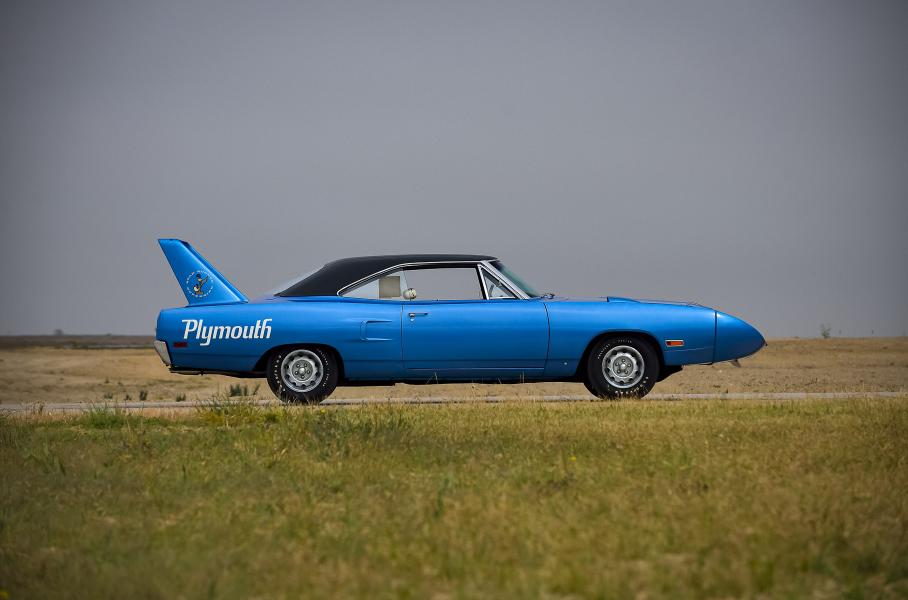
Plymouth Road Runner Superbird
At first glance, it looked like a Charger Daytona, but it’s not that simple. It was based on the mid-size muscle car Plymouth Road Runner with a completely different body. Turning into a “winged warrior”, he received a 19-inch fairing, and the wing had to be installed closer to the rear window and at a greater angle. In 1970, Bobby Isaac at Dodge became the NASCAR champion. He also became the first pilot in history to achieve 200 miles per hour (322 km / h) – a significant event took place on the Alabama super speedway on March 24.

Plymouth Road Runner Superbird
Together, the “winged warriors” won most of the races, from which the head of the series, Bill France, who opposed the aerodynamic special versions, probably gritted his teeth with rage. However, it is to him that we owe a relatively large batch of Superbird, which appeared due to the revision of the homologation rules for performance in the 1970 season.

One can only guess about the exact number of road “superbirds” – different sources indicate from 1920 to 2783 copies. Here, for example, information from one American book about muscle cars: 1971 cars were produced, of which 1120 received a Super Commando V8 440 engine (375 hp) with one four-chamber carburetor, another 716 Plymouth left the factory with a 390-strong version of this unit with three two-chamber carburetors, and traditionally in the minority were muscle cars with the famous 426 Street Hemi with a capacity of 425 hp, of which 135 copies were produced.

The monsters who managed to negotiate with the air currents reigned on superspeedways brightly and for a short time. In 1971, the competition regulations limited the engine displacement of unique Dodge, Plymouth, Ford, and Mercury to 300 cubic inches (4.9 liters). Even the outstanding aerodynamics did not allow to compete on equal terms with the “flying bricks” armed with large-volume “eights”, and the manufacturers returned to their usual bodies.
Daytona and Superbird can only rest on their laurels. At present, for the unsightly cars, which at first made people laugh, and then forced themselves to respect themselves, crisp bills appear in an amount sufficient to purchase a brand new Porsche 911 Turbo S. Price can reach 300 thousand dollars, but in 1970 the new Superbird cost from 4298 dollars, a thousand more expensive than the Road Runner convertible


